International Steel Prices
US HRC Prices and Imports Are Nearly Even
Written by David Schollaert
August 17, 2023
The spread US hot-rolled coil (HRC) prices had held over offshore product for much of the year has almost evaporated, according to SMU’s latest foreign vs. domestic price analysis.
Domestic HRC tags have been steadily declining since peaking in mid-April. As a result, the spread between US and imported product, which had ballooned to roughly 23% on average, is now less than 3%.
US hot band had been significantly more expensive than imports since February. Now, domestic prices and import prices are all but even. That’s in part because domestic prices have fallen by $125 per ton ($6.25 per cwt) since mid-July, while offshore product is down on average just $12 per ton over the same period.
HRC tags stateside, at an average of $765 per net ton, declined by $30 this week from last, slipping to their lowest level since late January. Domestic prices are now down $395 per ton since peaking this year at $1,160 per ton back in April.
Overseas prices have also weakened since April, but declines have been less pronounced. That has caused the spread between import and domestic pricing to dissipate.
Domestic hot band is now just 2.9% more expensive than foreign material. It was 15% more expensive just a month ago. Repeated domestic mill price hikes in early 2023 had resulted in US prices becoming nearly 23% more expensive than imports in Q1.
SMU uses the following calculation to identify the theoretical spread between foreign HRC prices (delivered to US ports) and domestic HRC prices (FOB domestic mills): Our analysis compares the SMU US HRC weekly index to the CRU HRC weekly indices for Germany, Italy, and east and southeast Asia ports. This is only a theoretical calculation because costs to import can vary greatly, influencing the true market spread.
In consideration of freight costs, handling, and trader margin, we add $90 per ton to all foreign prices to provide an approximate CIF US ports price to compare to the SMU domestic HRC price. Buyers should use our $90-per-ton figure as a benchmark and adjust up or down based on their own shipping and handling costs. If you import steel and want to share your thoughts on these costs, we welcome your insight at david@steelmarketupdate.com.
Asian Hot-Rolled Coil (East and Southeast Asian Ports)
As of Thursday, Aug. 17, the CRU Asian HRC price was $522 per ton, down $9 per ton from the previous week. Adding a 25% tariff and $90 per ton in estimated import costs, the delivered price of Asian HRC to the US is approximately $742 per ton. The latest SMU hot rolled average is $765 per ton.
US-produced HRC is now theoretically $23 per ton more expensive than steel imported from Asia.
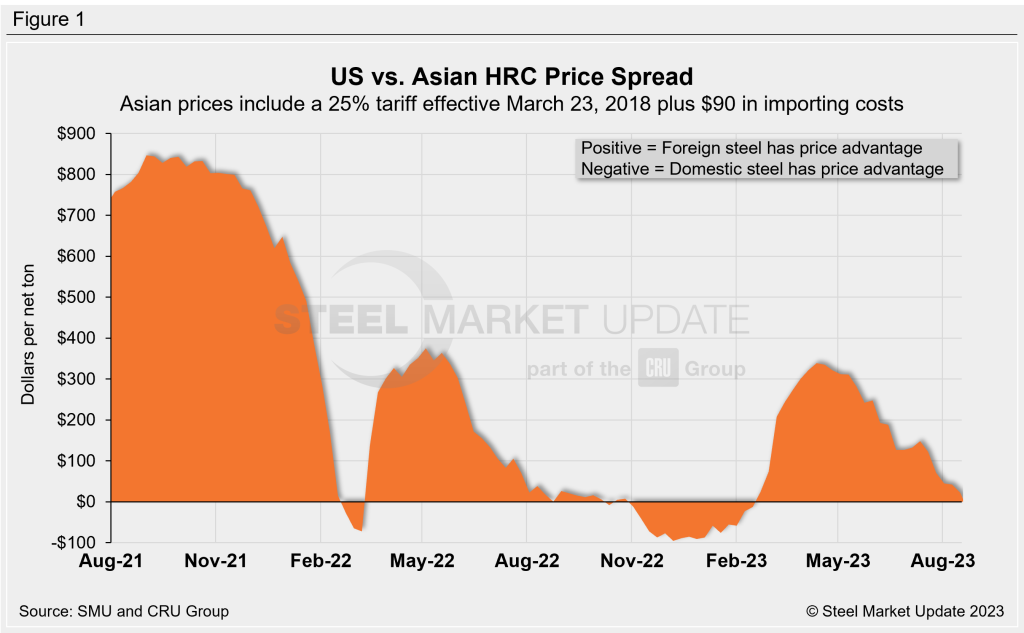
Italian Hot-Rolled Coil
Italian HRC prices moved down marginally week over week (WoW,) declining by $10 per ton to $649 per ton this week. After adding import costs, the delivered price of Italian HRC is approximately $739 per ton.
Domestic HRC is now theoretically $26 per ton more expensive than imported Italian HRC. That is a far cry from late March, when US tags were $260 per ton higher than those for Italian hot band.
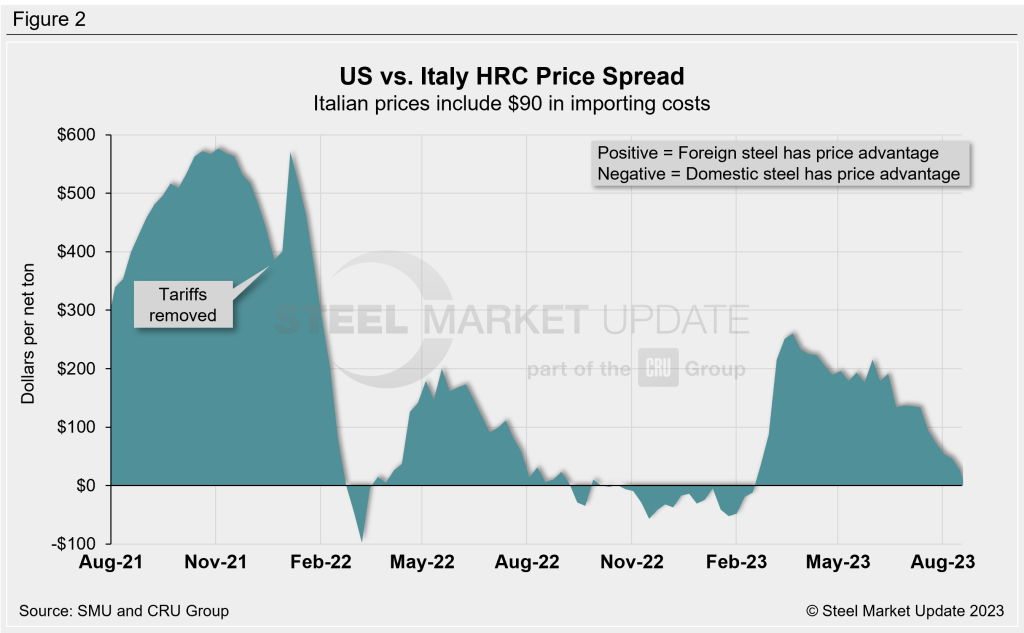
German Hot-Rolled Coil
CRU’s latest German HRC price is largely unchanged, down $12 per ton WoW to $658 per ton. After adding import costs, the delivered price of German HRC is roughly $748 per ton.
Domestic HRC is now theoretically $17 per ton more expensive than imported German HRC. That’s down $18 per ton WoW, and down $216 per ton vs. late March when German hot band was 20% cheaper than US product.
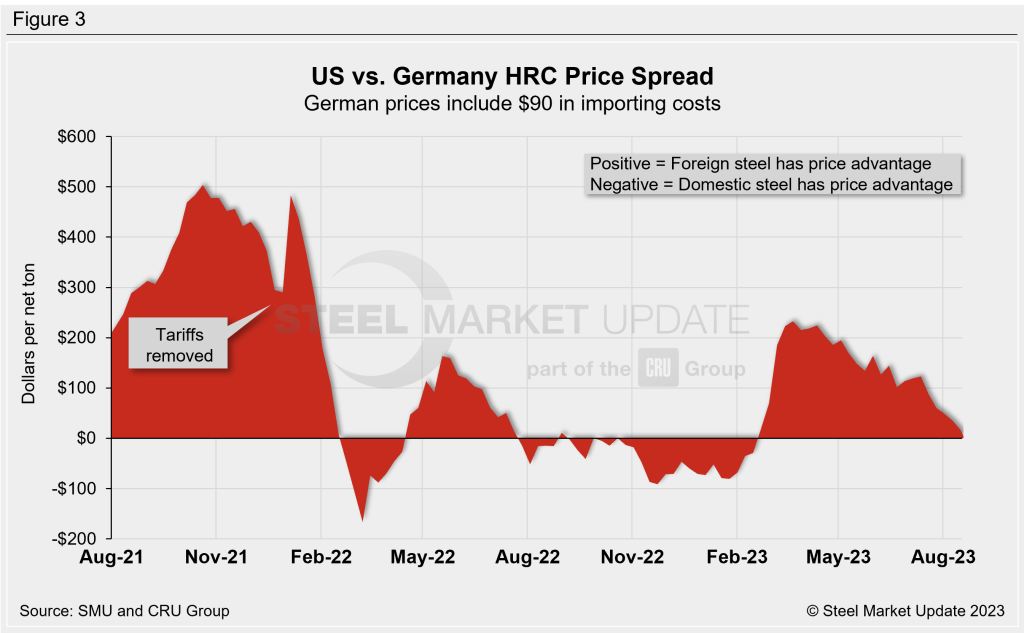
Figure 4 compares all four price indices. The chart on the right zooms in to highlight this year’s decoupling of US and offshore HRC prices.
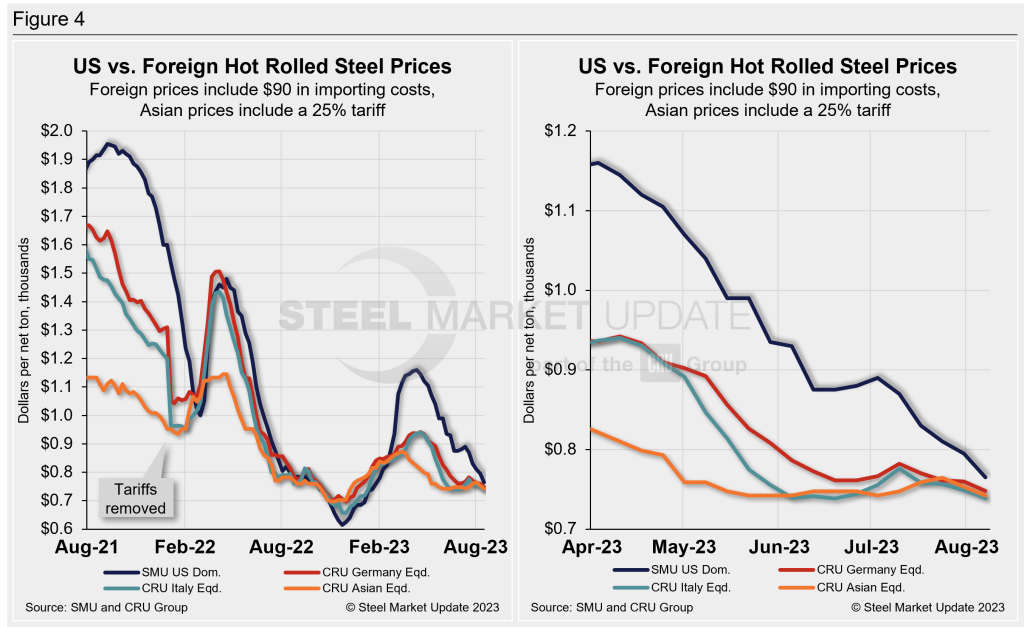
Notes: Freight is an important consideration in deciding whether to import foreign steel or buy from a domestic mill. Domestic prices are referenced as FOB the producing mill, while foreign prices are CIF the port (Houston, NOLA, Savannah, Los Angeles, Camden, etc.). Inland freight, from either a domestic mill or from the port, can dramatically impact the competitiveness of both domestic and foreign steel. It’s also important to factor in lead times. In most markets, domestic steel will deliver more quickly than foreign steel.
Effective Jan. 1, 2022, the traditional Section 232 tariff no longer applies to most imports from the European Union. It has been replaced by a tariff rate quota (TRQ). Therefore, the German and Italian price comparisons in this analysis no longer include a 25% tariff. SMU still includes the 25% Section 232 tariff on foreign prices from other countries. We do not include any antidumping (AD) or countervailing duties (CVD) in this analysis.

David Schollaert
Read more from David SchollaertLatest in International Steel Prices

Doubled S232 tariff holds US HR prices below EU
David Schollaert presents this week's analysis of hot-rolled coil prices, foreign vs. domestic.
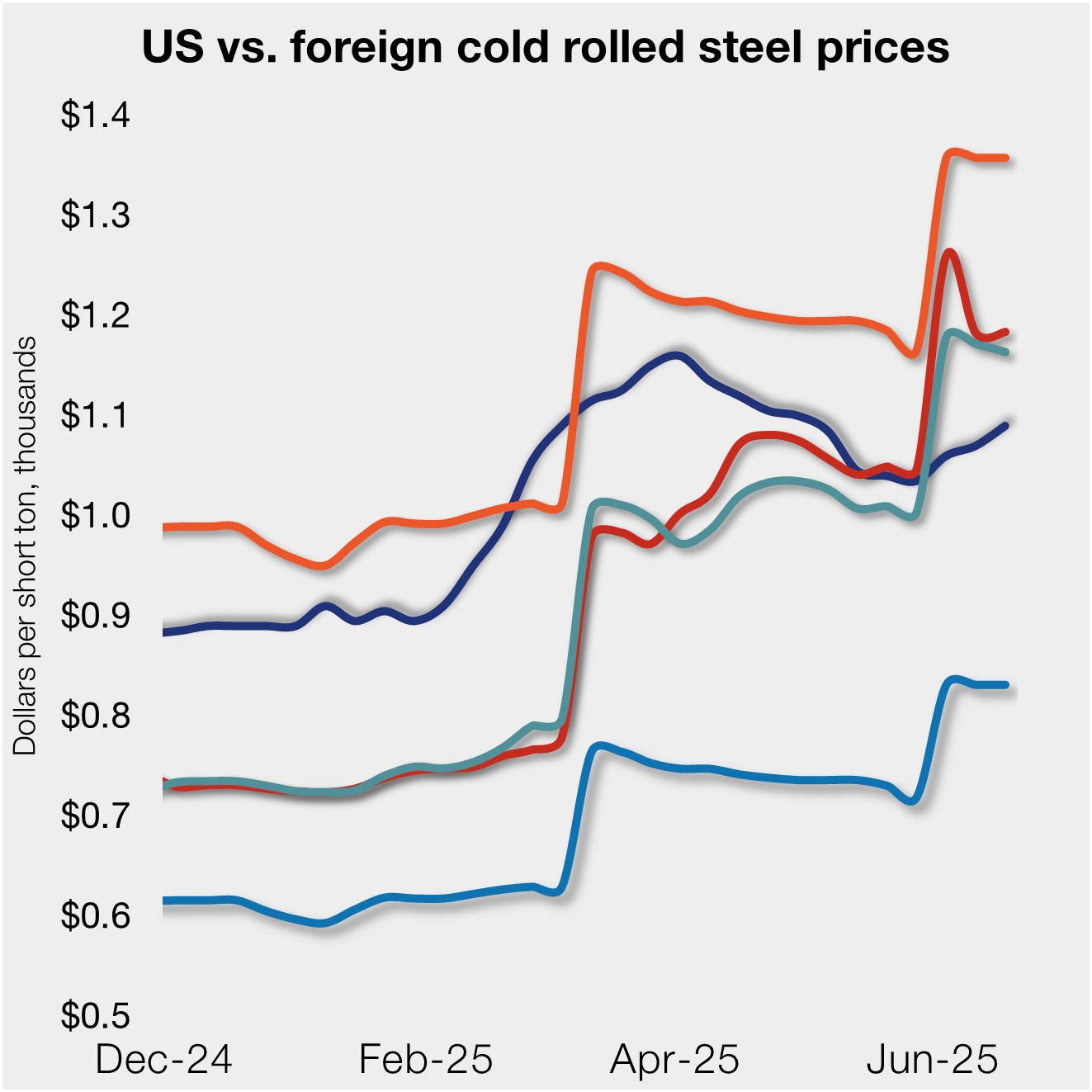
Higher US CR prices inch closer to EU, Japanese tags
US cold-rolled (CR) coil prices continued to tick higher this week, while offshore markets were mixed.
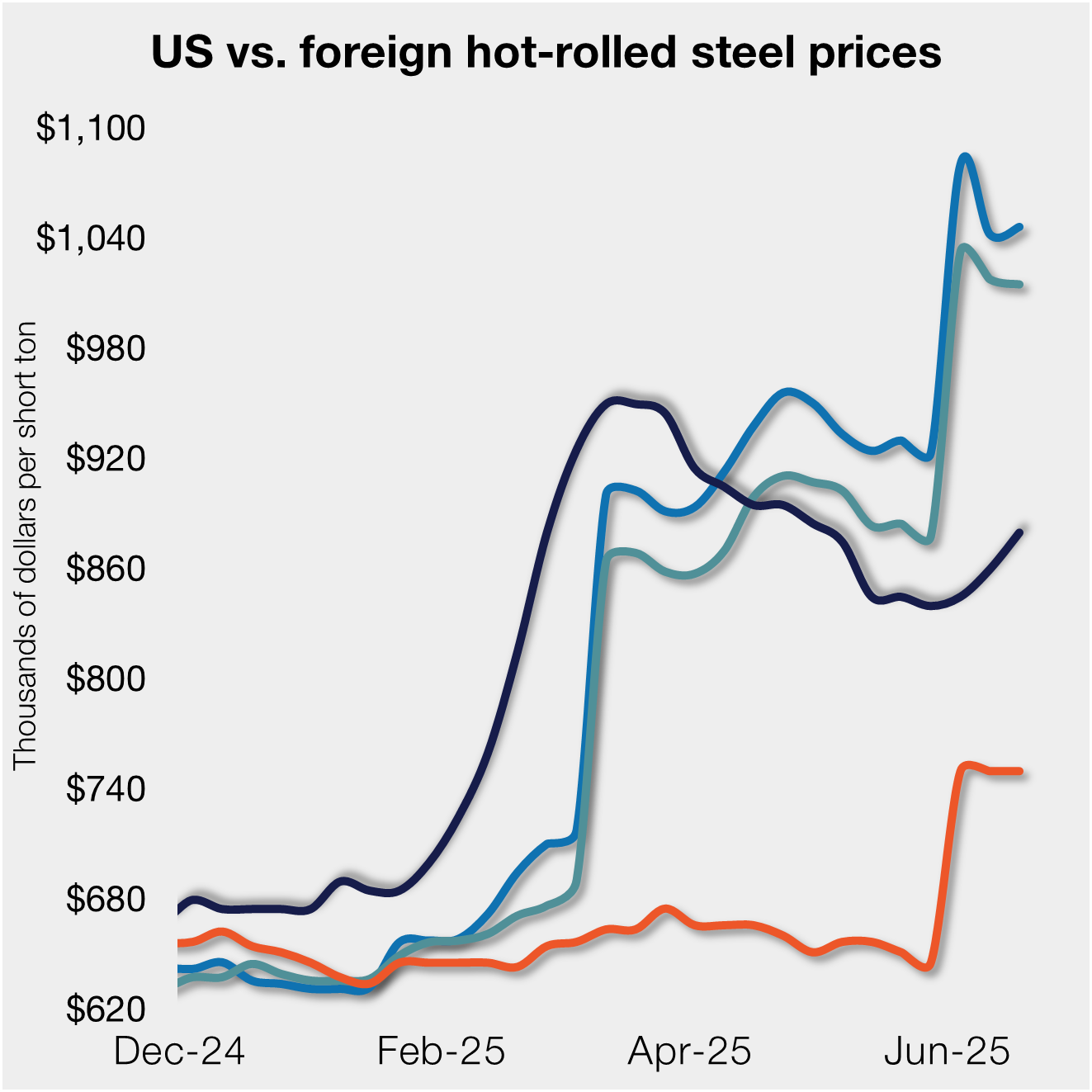
Stacked S232 keeps US HR prices below EU
US hot-rolled coil prices crept up again this week but still trail imports from Europe.
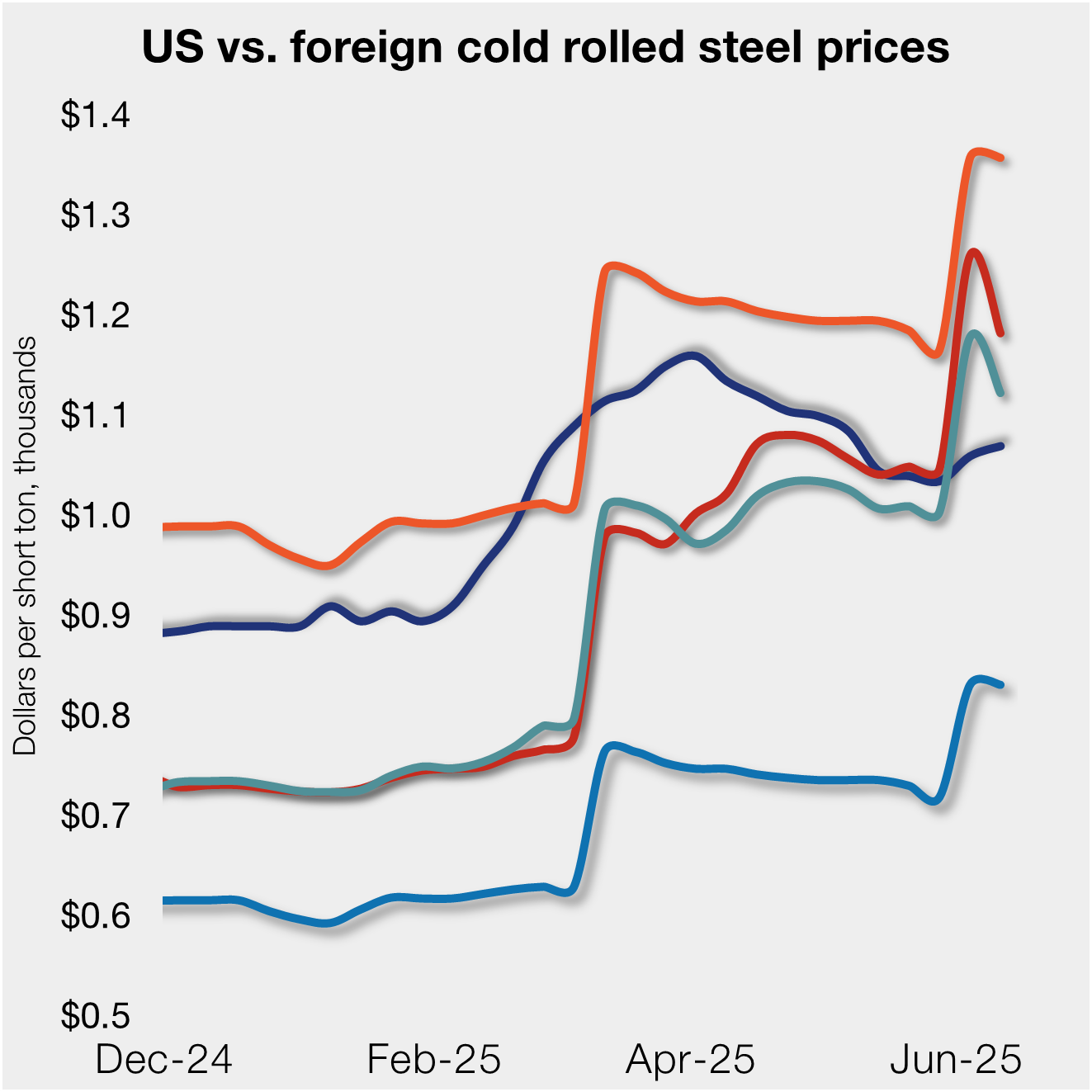
Doubled S232 lifts EU, Japanese CR prices over US tags
US cold-rolled (CR) coil prices edged up again this week, and most offshore markets moved in the opposite direction. But the diverging price moves stateside vs. abroad did little to impact pricing trends. The bigger impact was from Section 232, which were doubled to 50% as of June 3. The higher tariffs have resulted in […]

CRU: Sheet demand remains weak, tariff changes again alter markets
Subdued demand has continued to weigh on steel sheet prices globally.
